Tom's Hardware Verdict
Cooler Master boldly reimagines a classic with the HAF 700 Evo. It succeeds in delivering a visually striking beast of a case, with excellent performance. But thanks to features like its RGB-lit glass grille and LCD screen, this is also likely to be one of the most expensive (and heaviest) PC cases to date.
Pros
- +
+ 200 mm fans
- +
+ Gorgeous glass grille and infinity mirror
- +
+ Iris LCD screen
- +
+ Server-level drive support
- +
+ Tool-free GPU, PSU and drive installation
- +
+ Great thermal performance
Cons
- -
Very expensive
- -
Side panels aren’t hinged
Why you can trust Tom's Hardware
2/16/2022 Update: A previous version of this review noted that the front panel and front dust filters were not removable. Both are, although the panel is difficult to remove. The text below has been corrected to remove these inaccuracies.
Over the last few years, airflow-focused cases have gained so much popularity that all-glass enclosures have become a meme to be mocked. Many companies will play to the airflow crowd by taking an existing chassis and adding a mesh front panel to it, which can work, but it’s boring. Instead, Cooler Master is trying to reinvent airflow cases with its new HAF 700 Evo. It harkens back to its history of expertise in this area, by bringing its HAF (High Air Flow) brand back from the dead.
Over a decade ago, Cooler Master released its HAF X case, now touted as one of the best PC cases ever, thanks to its timeless thermal performance and convenient design. But times change, and ports and component stanards change along with them. Here in 2022, 5.25-inch drive bays have become niche instead of a necessity, and tempered glass side panels have more or less become mandatory.
With all of that in mind, Cooler Master decided to make a new high-end HAF case for the modern DIY and desktop market, and the HAF 700 Evo is the culmination of that endeavor. Available solely in “titanium grey,” the new HAF boasts impressive performance thanks to huge 200 mm fans, a front-facing circular LCD screen and a stunning glass grille that’s edge-lit with RGB lighting, plus a host of other features. Of course, that also means the HAF 700 has something else in common with the component world of 2022: a shockingly high price. Cooler Master says the case has a global MSRP of $499, but that excludes freight and tariff costs. So it’s likely that in many markets its street price will be significantly higher.
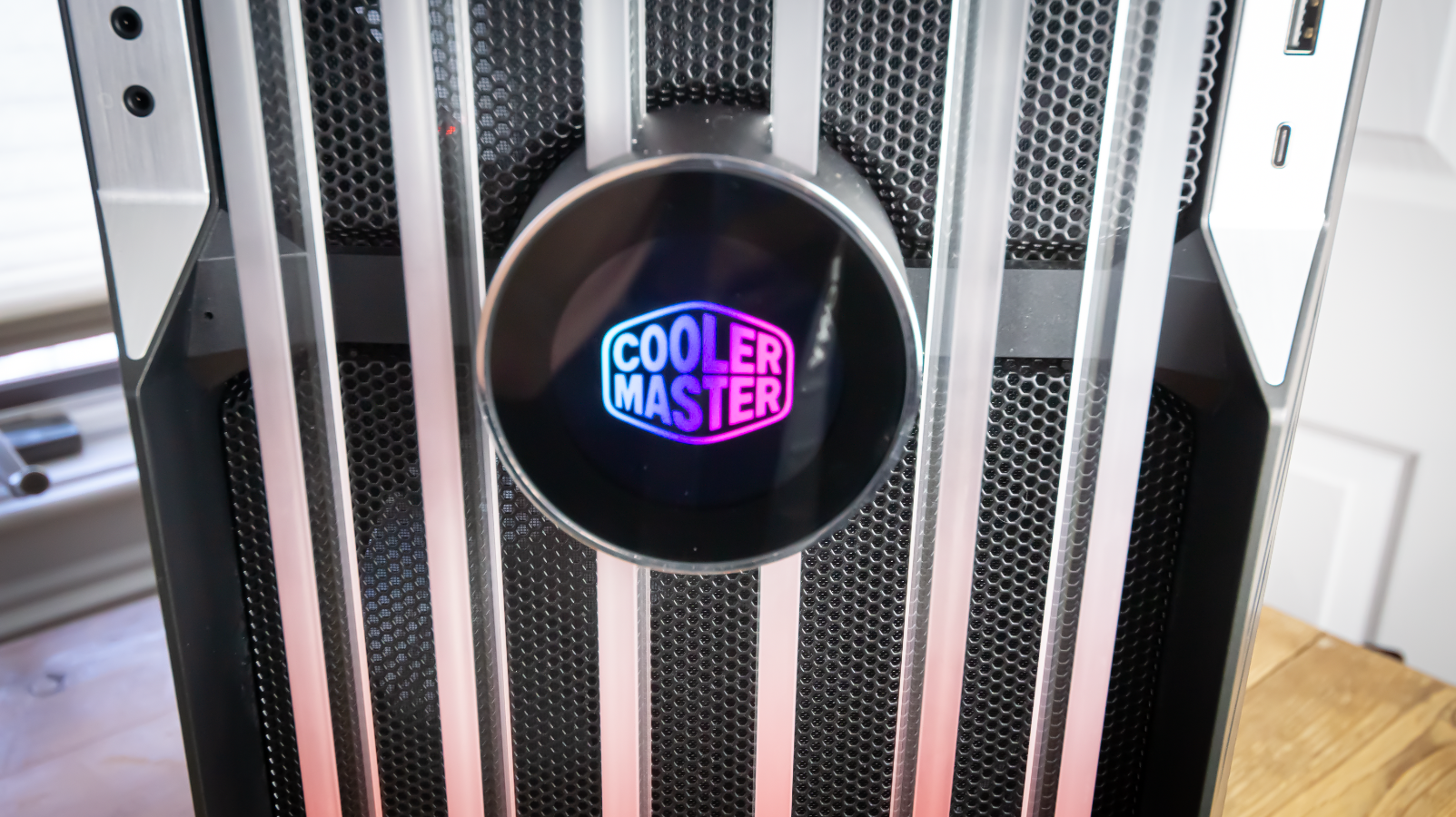
Specifications of the Cooler Master HAF 700 Evo
| Type | ATX Full-Tower |
| Motherboard Support | Mini-ITX, Micro-ATX, ATX, E-ATX |
| Dimensions (HxWxD) | 24.64 x 11.45. x 26.22 inches |
| Max GPU Length | 19.29 inches (490 mm) |
| CPU Cooler Height | 6.5 inches |
| External Bays | X |
| Internal Bays | 12x 2.5 or 3.5-inch |
| Expansion Slots | 8 |
| Front I/O | 4x USB 3.2 Gen 1 Type-A (5 Gbps), 1X USB Type-C (up to 10Gbps) |
| 3.5mm headphone | |
| 3.5mm audio jack | |
| Reset switch | |
| Other | Tempered Glass Side Panel |
| Front Fans | 2x 200 mm |
| Rear Fans | 2x 120 mm |
| Top Fans | None |
| Bottom Fans | 1x 120 mm |
| Weight | 53.57 pounds (24.3 kg) |
| Warranty | 2 years |
Features of the Cooler Master HAF 700 Evo
The HAF 700 Evo doesn’t look like its 2010-era HAF X sibling. There aren’t any 5.25-inch drive bays or detachable wheels. Instead, you get a modern case with some heritage baked in, which I’ll get into below.
The first thing that caught my eye on the Evo was the glass grille, made up of six vertical panes. It’s gorgeous, and I give Cooler Master credit here because the company managed to deliver a tempered glass front panel that’s still airflow-focused. Behind the glass are two mesh panels that pay homage to the original HAF X by their design (more on that later). Instead of having the mesh run down the entirety of the front panel, the meshed portions are just a tad bigger than the two huge 200 mm intake fans.

To the left and right of the glass on either side is the case’s IO, which is abundant. You get four 5 Gbps USA-A ports and a USB-C port (up to 10 Gbps, depending on your motherboard) the right side and power, reset and two audio jacks on the left. But there’s no RGB controller, so you’ll have to use the case’s software, MasterPlus+ to control your lights.
Get Tom's Hardware's best news and in-depth reviews, straight to your inbox.

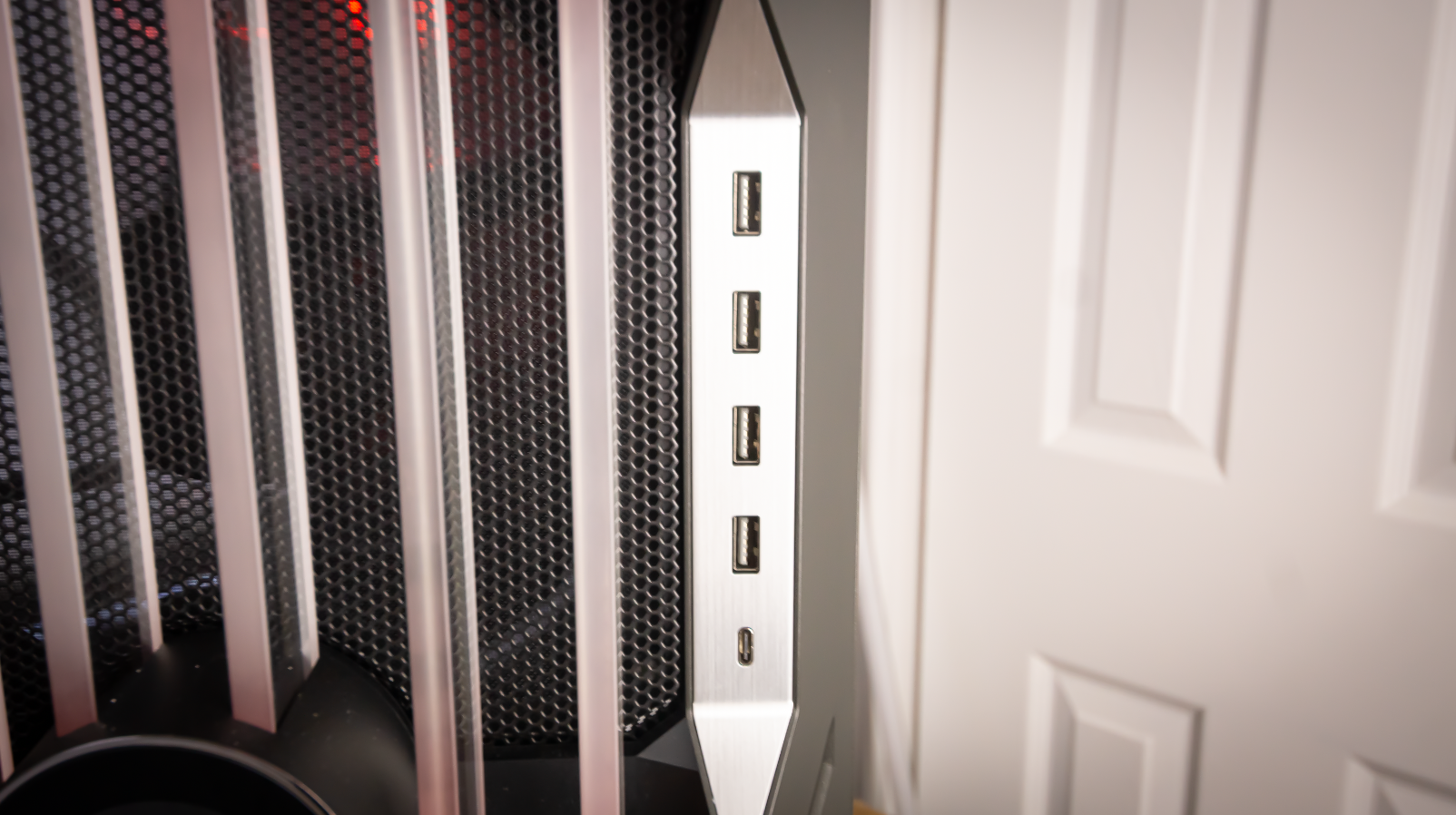
The 200 mm fans here aren’t the usual 200 mm fans we’ve seen on Cooler Master H500–these are part of the SickleFlow lineup, translucent spinners that look like those non-LED fans you’d find in cases from a decade ago. I wouldn’t buy these fans by themselves because they’re not pretty, but they fit in well here behind the RGB-lit glass. Also included with the case are three SickleFlow 120 PWM aRGB fans, two mounted in the rear for exhaust and one on the bottom. If you want to play with fan locations or add more cooling of your own, there are a plethora of options. Depending on the hardware you install, the case has 18 fan mounting locations.
With all of the fans and RGB this case has, the wires need somewhere to go, and that’s preferably one place rather than all over the motherboard. Cooler Master has included an RGB and fan hub which comes pre-connected and conveniently placed for future additional fans and LEDs.
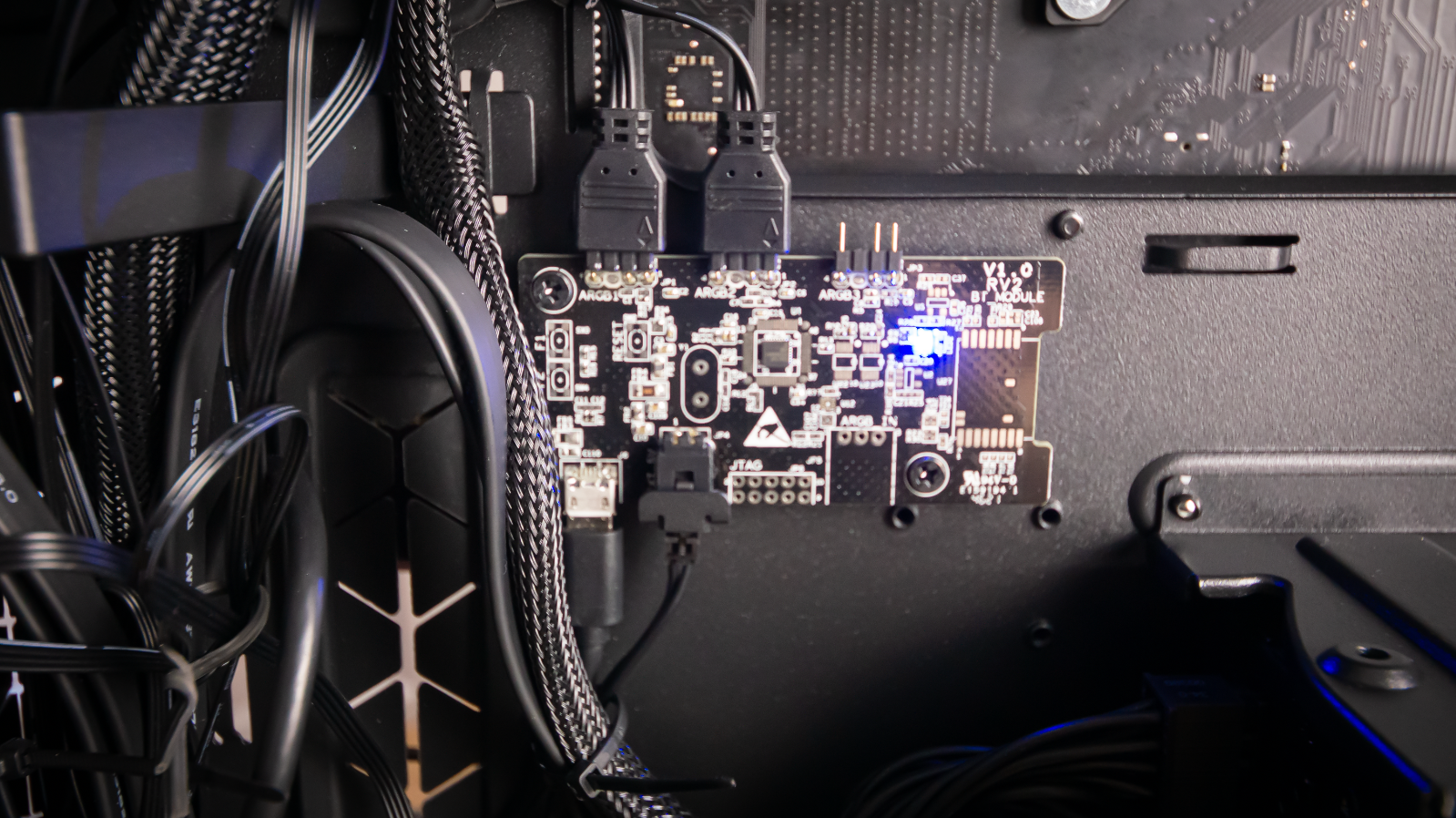
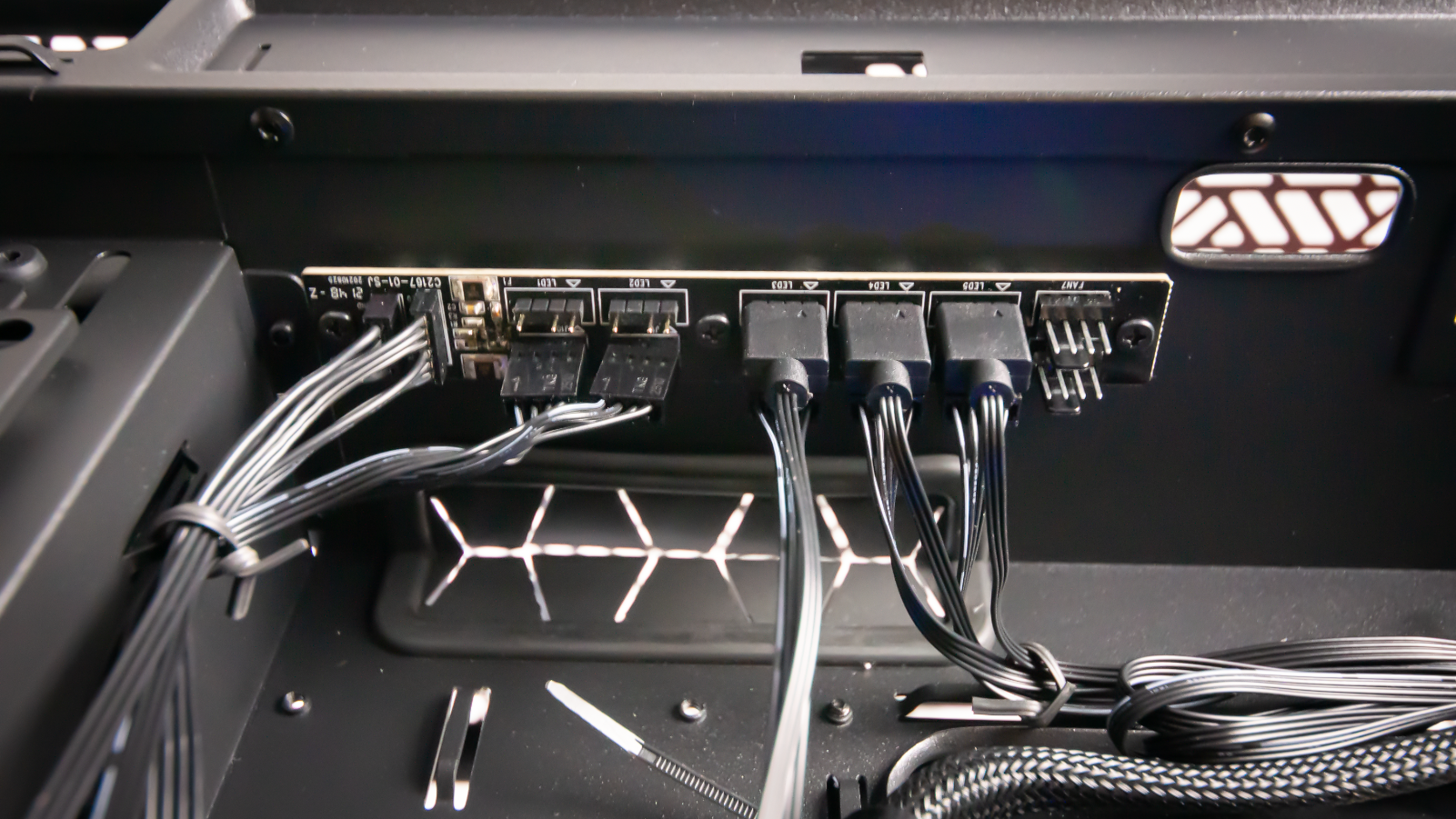
With a case this big, I expected support for large radiators, and Cooler Master did not disappoint. What I wasn’t expecting was support for up to a 240 mm radiator in the rear; that’s something I’ve only seen before on the Corsair 1000D. Along with that, you get a maximum of a 420 radiator at the top, front and bottom of the case, and a 480 rad on the side. Seriously, there are enough cooling options here for three normal cases, if not more.
Like the original HAF X, there is a ton of room for storage, which is refreshing because so many recent roomy cases haven’t bothered to build in support for lots of big drives. This chassis allows for a total of 12 3.5- or 2.5-inch drives. There are two main spots for storage drives: in a drive cage behind the motherboard tray or in front, behind the intake fans. The drive cage behind the motherboard is really satisfying to operate. The tool-free caddy has tool-free sleds. It swings outward and when I reinstall it, it feels like I’m inserting a box magazine into some futuristic weapon.


Cooler Master wanted to limit the use of tools as much as possible with this case. So the installation of graphics cards, power supplies and storage devices no longer require screws. For graphics card installation, there’s this girthy metal door for that holds your GPU in place when closed. The power supply installation is just like a normal graphics card installation, requiring two thumbscrews. The tool-free GPU installation makes me nervous because it doesn’t feel as secure as normal thumbscrews. Nonetheless, it seems to work.
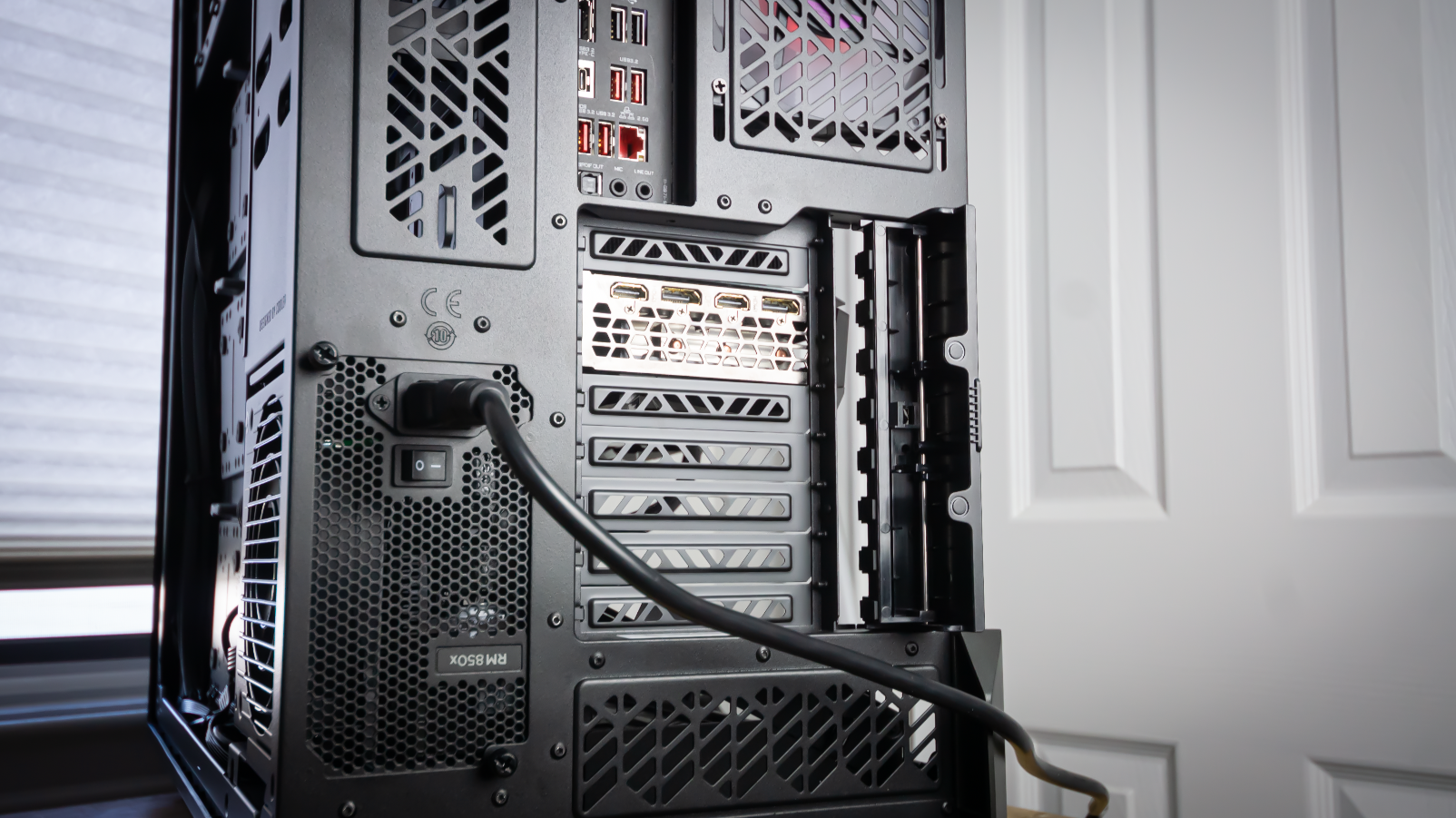
The Cooler Master HAF 700 Evo pays quite a bit of homage to the legacy of the HAF X, but it also thoroughly embraces RGB components, helping you to show them off. The case includes a vertical GPU mount, which is fun, but all of the removable fan trays can be rotated, which is something that I’ve never seen.

Attached to the side-mounted fan tray is the infinity mirror, a mirror designed to both hide unused or unattractive parts of the case while leting you better show off attractive pieces of hardware. And because it’s seated on the fan trays, it too can be rotated and moved.
We’ve discussed all of the case's novel features so far, save for one: Iris is the LCD screen at the front of the case that can showcase anything from your hardware’s temperatures to a picture or even video. While Iris is cool, I’m not too keen on the look. The circular display looks like it was ripped off of an AIO cooler or a Nest thermostat. Don’t get me wrong, it’s still cool, but I wish it was shaped like the Cooler Master logo, or even that there was a version of the case without it, at a lower price.

Internal Layout of the Cooler Master HAF 700 Evo
Because it’s so roomy and packed with features, building in the HAF was simple, at least in most ways. I couldn’t move this case around with as much ease as other cases, thanks to its bulk and 53.57-pound weight when empty. Yes, it’s almost 54 pounds before you put any parts in it. This meant that I installed the motherboard with the case standing up.
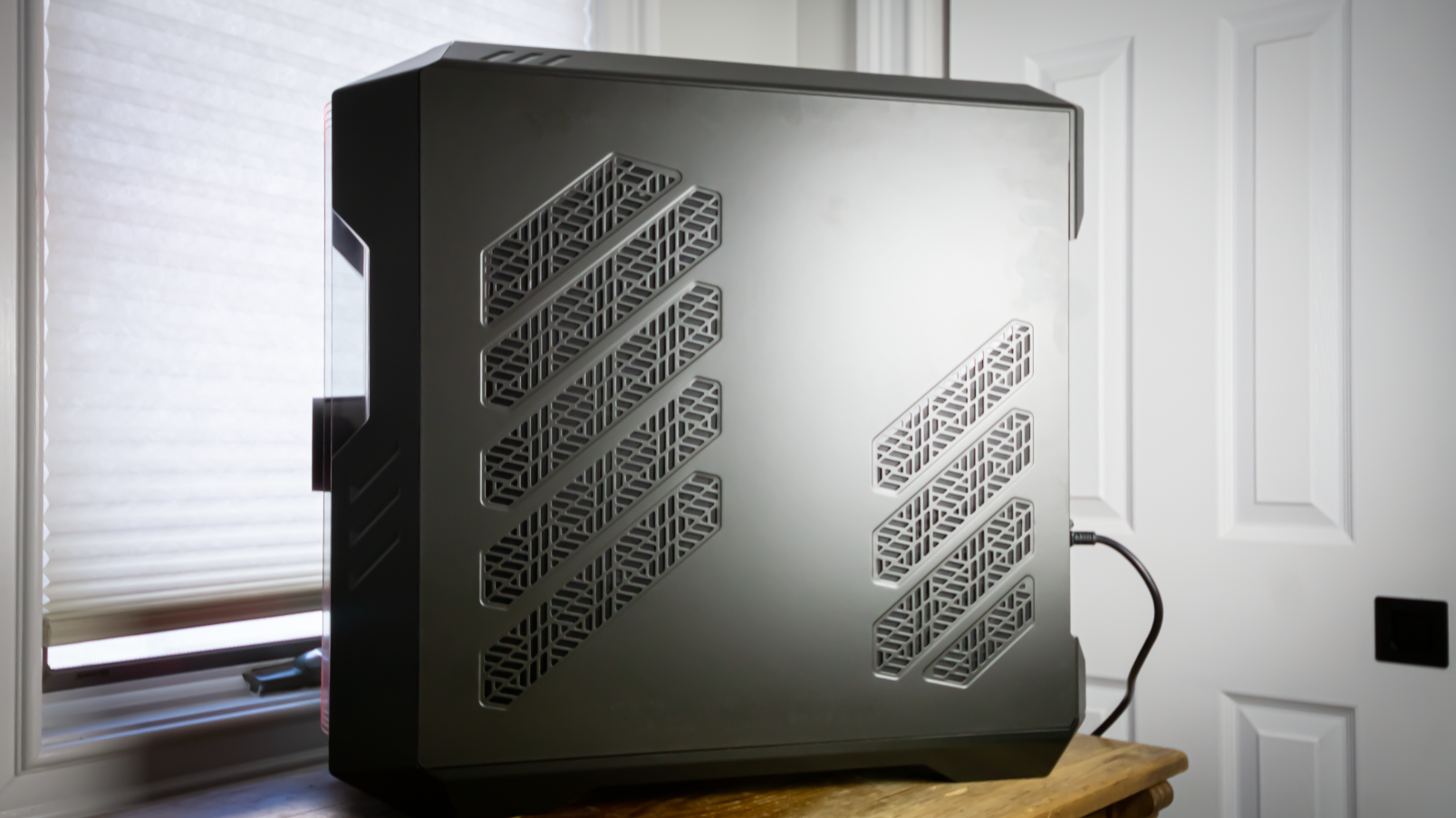
The largest standard hardware can fit in this chassis. You get up to 6.54 inches (166 mm) of height clearance for CPU coolers and 19.29 inches (490 mm) for GPU length. Cooler Master even says the case supports workstation motherboard form factors like SSR-CEB/EEB. Mini-ITX and Micro-ATX are also supported along with standard ATX. But installing anything less than a full-ATX motherboard in here would look pretty silly.
The idea of removable radiator or fan trays isn’t a new thing, though it is very convenient. However, this usually calls for lots of unscrewing first. Not in this case, though–no pun intended. Cooler Master has made the radiator trays removable via latches. You need to turn the latches, and the entire tray comes out. I love this design; it makes building in a case that's already a breeze to build in even easier.
I fiddled around finding the proper position for the infinity mirror. Still, I ultimately reinstalled it over the side fan mounts because it was the most visible spot in the chassis. Also, there’s no other panel included with the case to cover the fan mounts if neither fans or the infinity mirror is installed here, so it looks kind of odd without it. All this case needs now is a mini smoke machine and you could have a little funhouse inside of it.
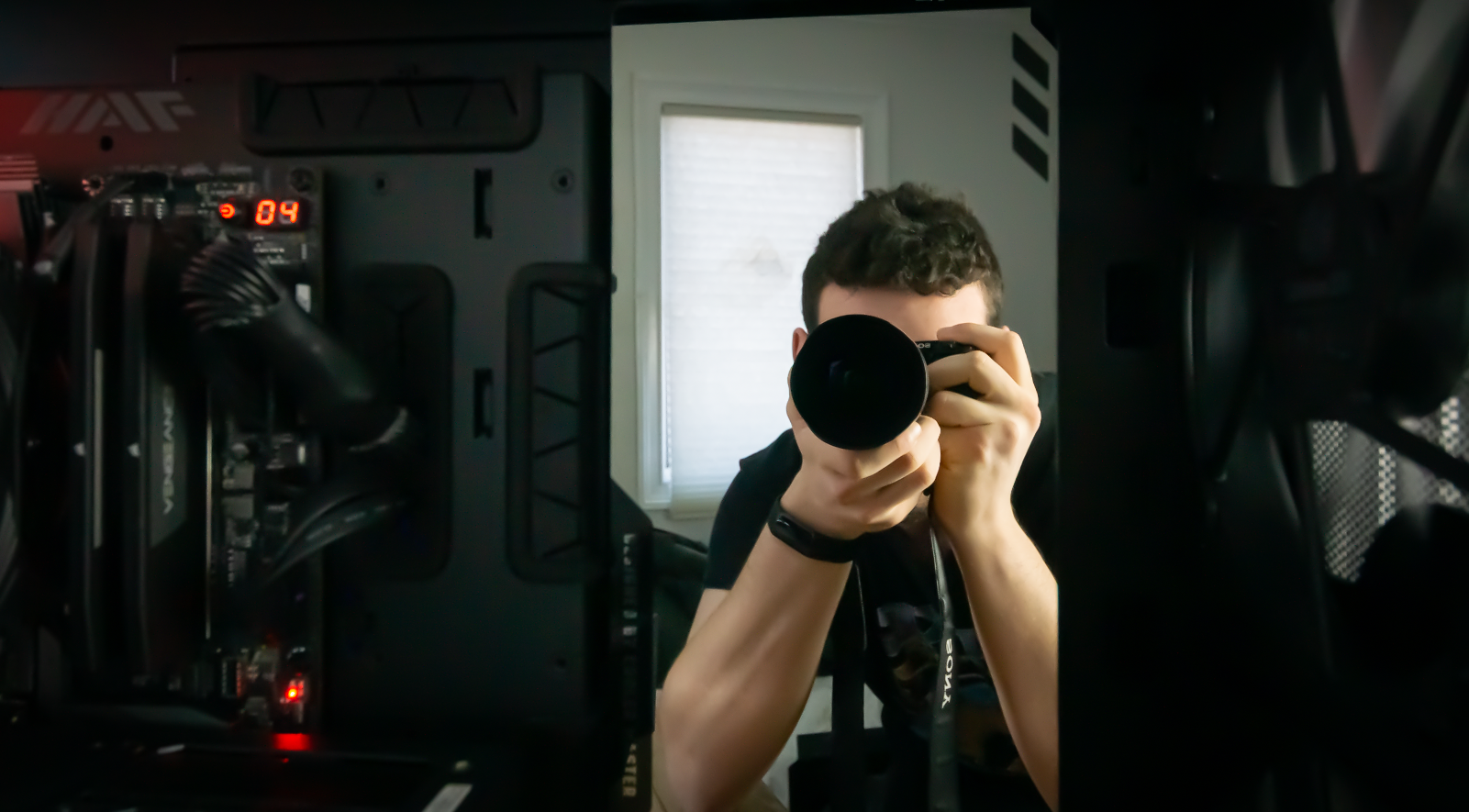
The front fans, as mentioned before, are the SickleFlow 200 mm models. While I like how they have that semi-translucent design like in the original HAF X, I wish these had RGB because the light from the glass grille doesn’t travel into the chassis at all. So if your components don’t have bright lights, you may want to invest in some long RGB strips.
The power supply is mounted behind the motherboard tray, similarly to the Phanteks Ethoo Pro II. Mounting the power supply behind the motherboard tray helps fill out the rear of the case and
allows for more space for the PSU to breathe since it’s not shoved underneath the case like an afterthought.
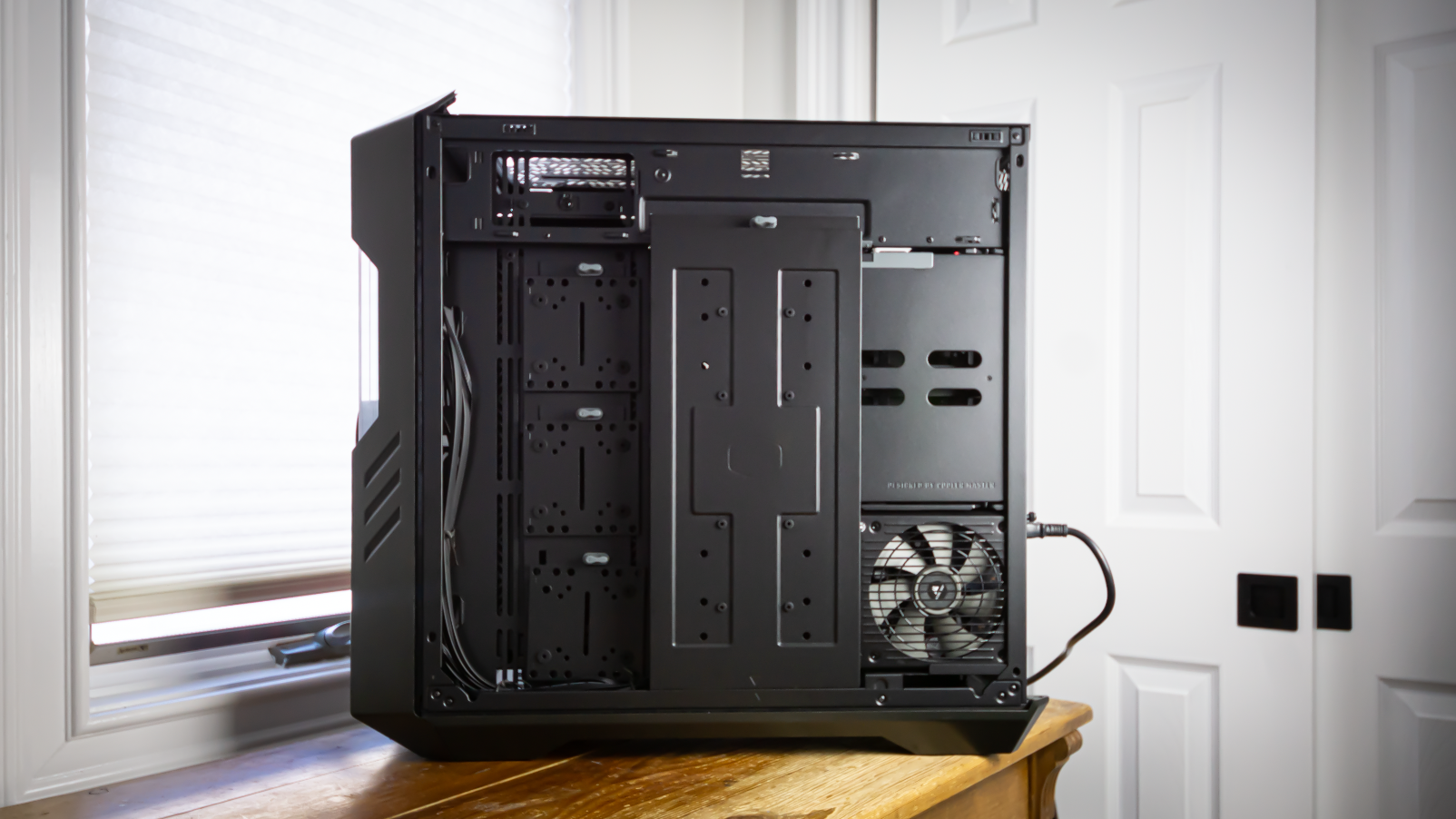
Cooler Master HAF 700 Evo Cable Management
There’s a lot going on in the rear of this case. You have the power supply (when installed), the magazine-like drive caddy with its removable drive sleds and the RGB and fan hub. However, there’s still a ton of space for cables, so much so that you could probably fit sleeved extensions here without much hassle.
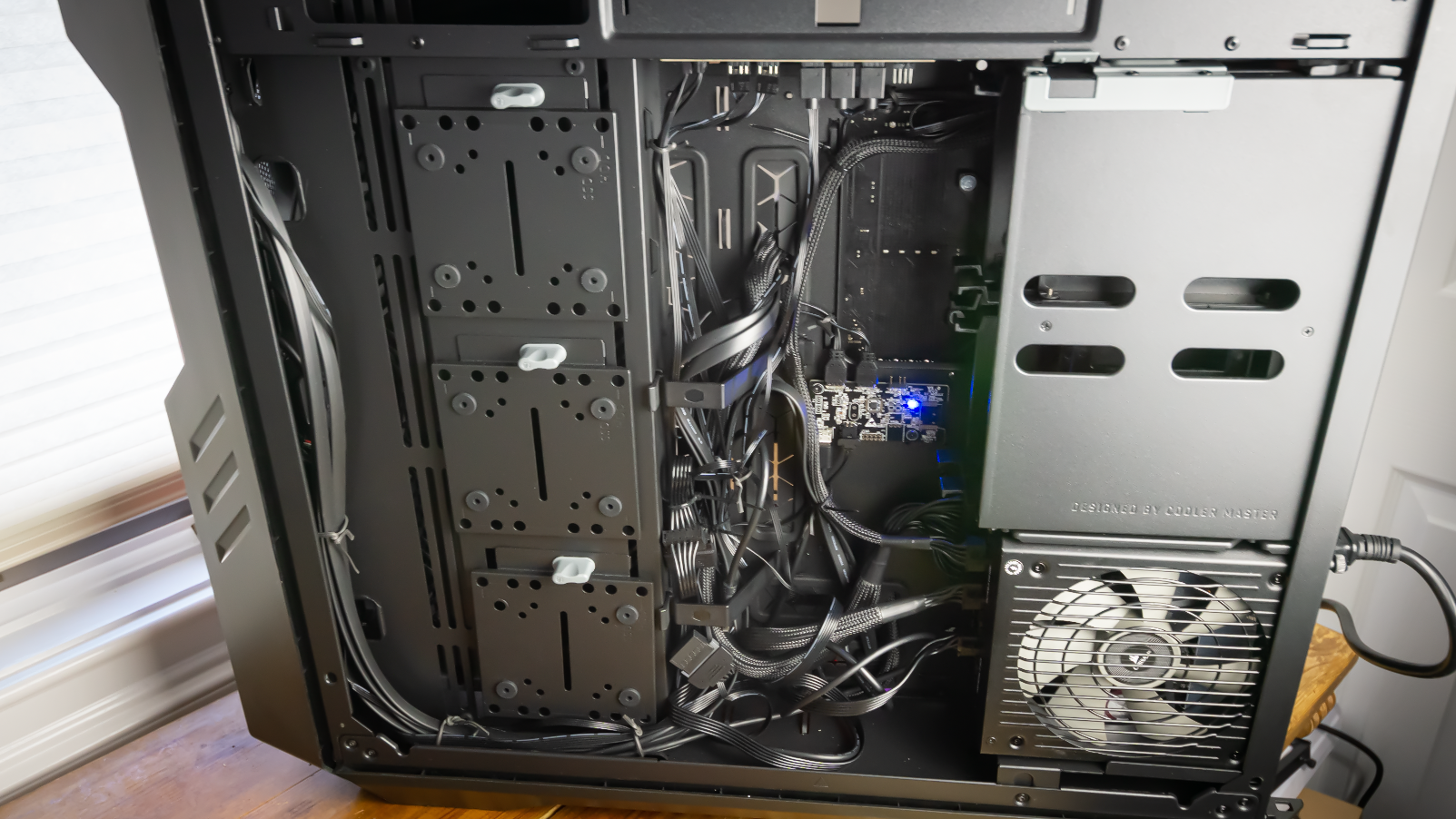
Cooler Master also includes plastic “QuickClips” that substitute for velcro cable ties. I’m not a fan of the clips– they don’t feel very robust and I can see them snapping over time. However, Cooler Master did include velcro ties in the box to aid in other cable tie-down points.
Cooler Master HAF 700 Evo Cooling
While the HAF 700 Evo’s main 200 mm fans lack RGB, the included three additional 120 mm fans are aRGB. The 200 mm intake fans are covered by a new type of mesh that Cooler Maser calls FineMesh V2. It features a hexagonal shape and is meant to double as a dust filter. Because of the glass and screen, the front panel is difficult to remove. But there is a dust filter behind the panel, which is removable for cleaning once you've managed to pop the front off.
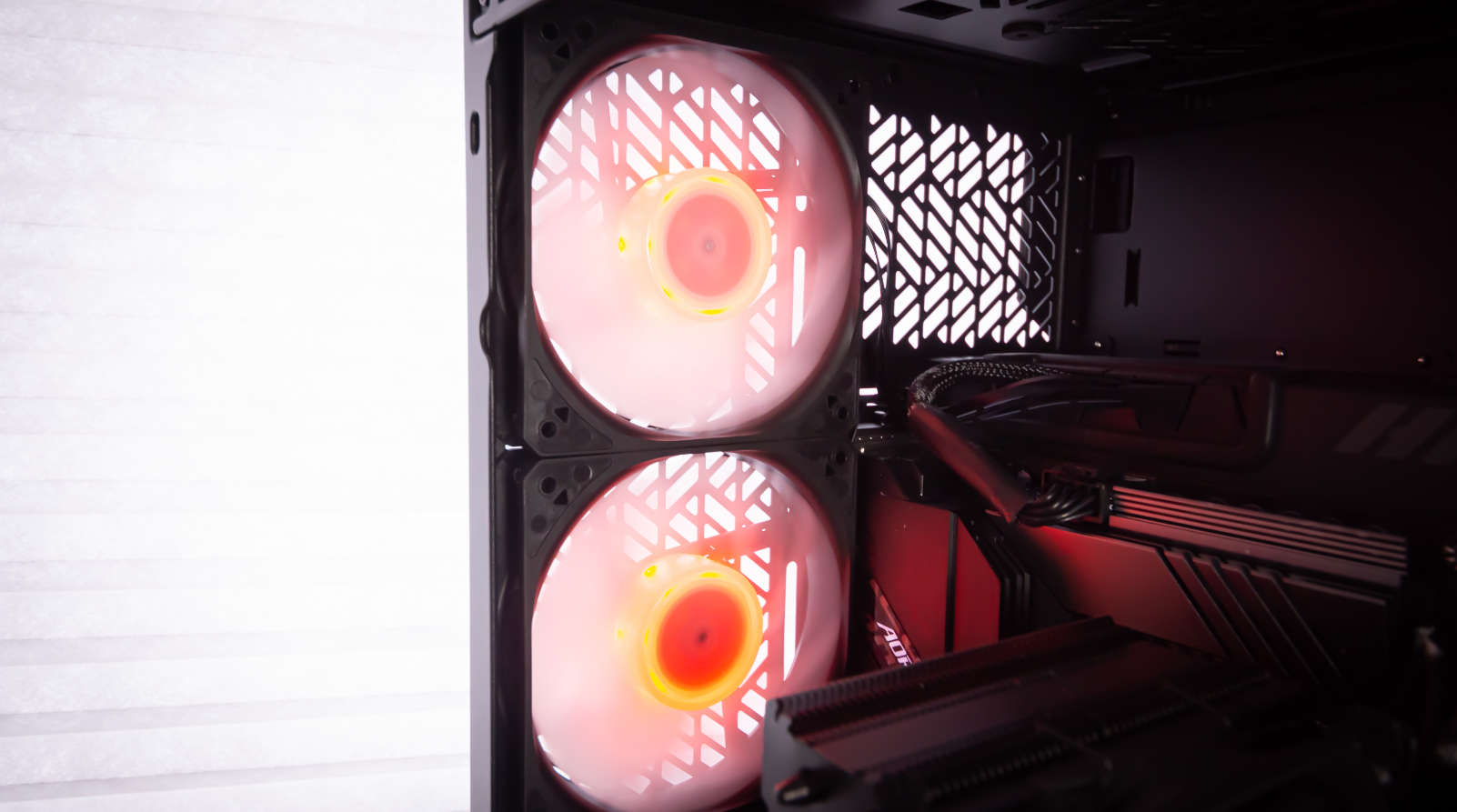
Testing Hardware
Since Intel’s 12 Gen “Alder Lake” has shaken up the desktop landscape (and taken prominent spots on our best CPUs for gaming list), we’ve updated our case testing hardware. We’re now using a Core i7-12700KF, which is being cooled by a Noctua U12s air cooler. Our graphics card is a Gigabyte RTX 3070 Ti Gaming OC.
Acoustic Results for the Cooler Master HAF 700 Evo
Our acoustic test consists of three scenarios: We run the CPU at full load, the CPU and GPU at full load, and an optimized mode. The CPU full load test runs the CPU and case fans at their maximum speed. For the CPU and GPU full load acoustic test, we also stress the Gigabyte RTX 3070 Ti Gaming OC and set the fans at 75% speed, because in gaming the fans never run at 100 percent and are far too loud when they do.
For the optimized mode, we run the GPU fan speed at 30 percent and run the CPU and included case fans at their lowest spinning speed.
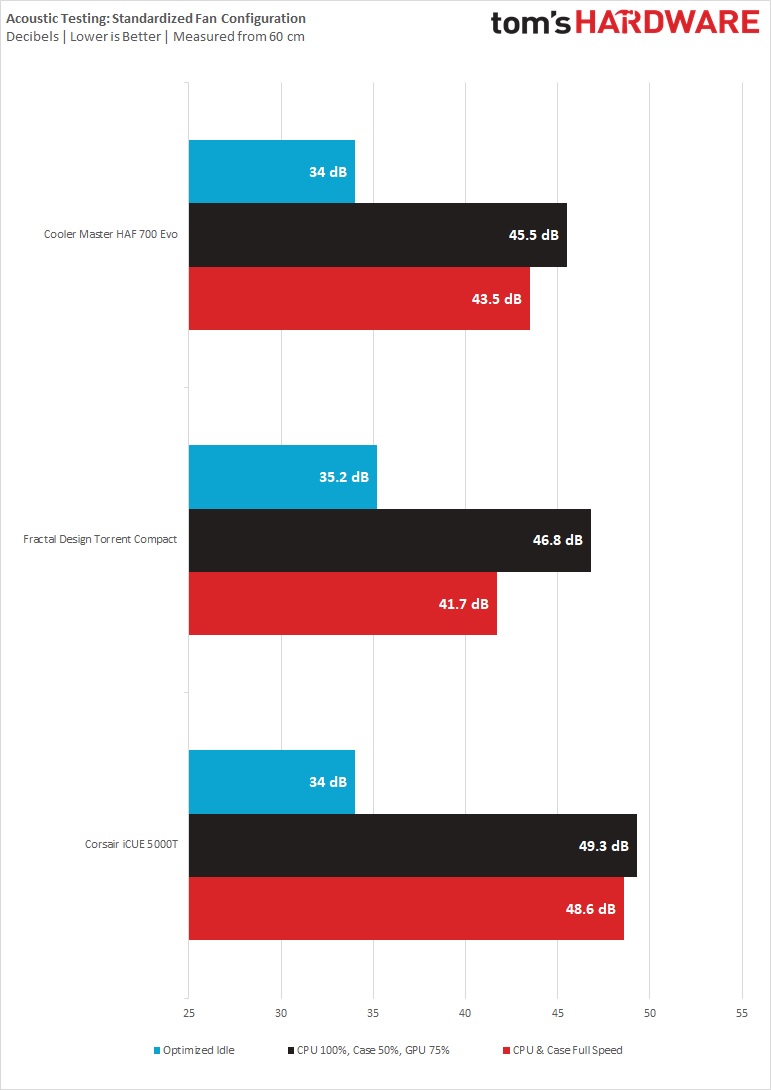
The HAF 700 Evo isn’t the quietest case, but it wasn’t designed to be, as evidenced by its name. However, thanks to the SickleFlow 200 mm fans, more air can enter the case without the fans spinning very fast. Don’t let the numbers fool you; this case didn’t sound loud during normal use and you’ll never have to crank the fans very high to get good temperatures.
Thermal Results for the Cooler Master HAF 700 Evo
For the thermal tests, all case and CPU fan speeds are set to 100%. The i7-12700K is set at a 4.7GHz clock at 1.3v on all performance cores to ensure consistent power consumption across test scenarios. Letting the GPU run at 75% fan speed enables it to maintain its power target while sticking to one set reasonable fan speed, so that the temperature is the only variable.

Cooler Master did a great job when it came to crafting a unique airflow-oriented case, which is evident by its chart-topping performance (at least on the few cases we’ve tested on this platform so far). It’s worth mentioning that these temperatures are just with the case’s stock layout. With 15 additional fan mounts, its performance can get even better.
Bottom Line
As a fan of the HAF X, I was a bit worried that Cooler Master had a lot to live up to with a new HAF flagship. But overall, the HAF 70 Evo is brilliant. The glass grille is unlike anything I’ve seen before on a case, and the LCD screen is a welcome addition–although I’d still like it to be either bigger or a slightly different shape so it doesn’t feel like something pulled from an AIO cooler (which it clearly is).
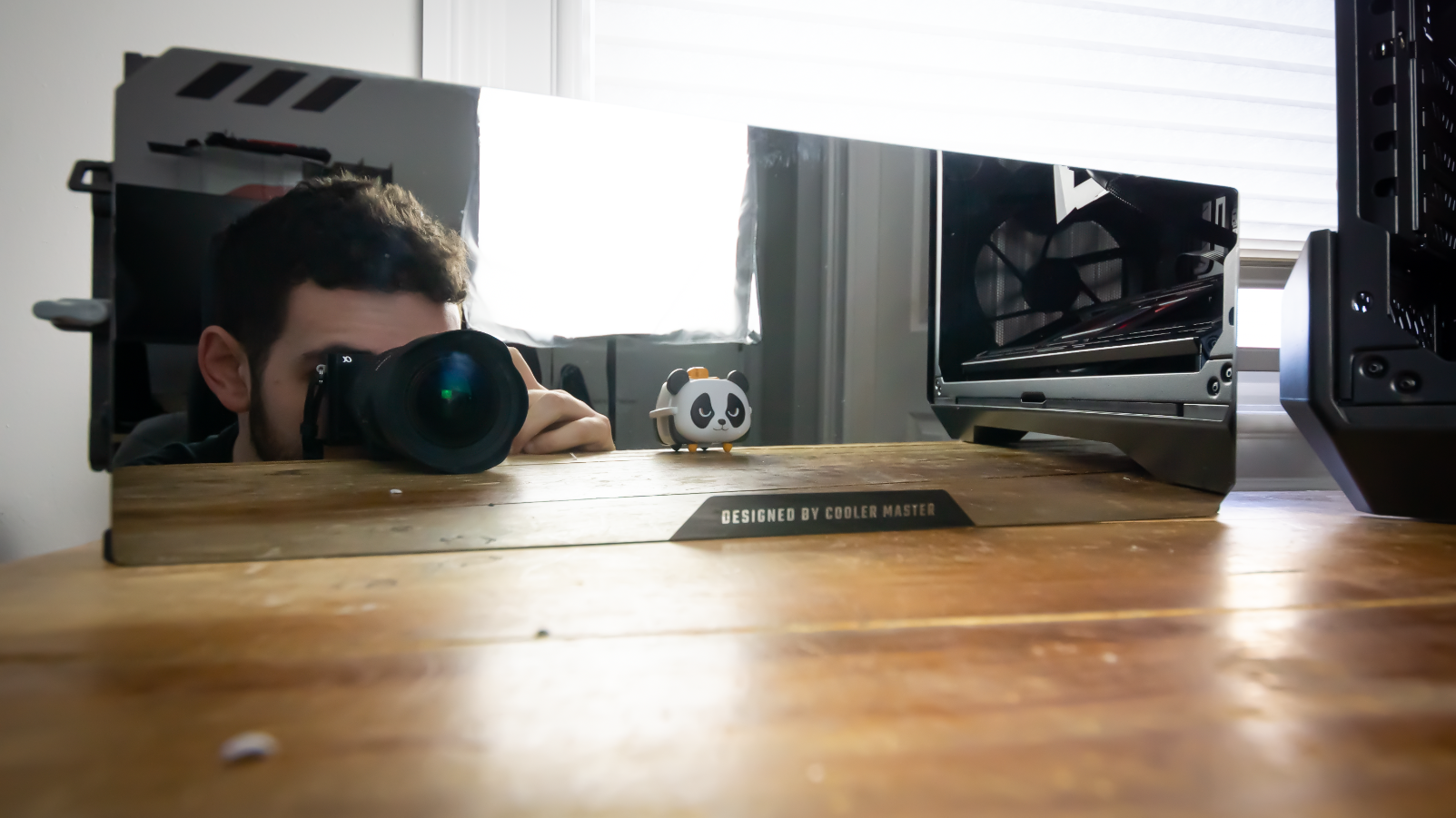
I appreciate how Cooler Master balanced modernizing the original HAF, without cutting out all the original design, and specifically its excellent performance.
Of course, like everything, this case isn’t perfect. For starters, the price is through the roof. Seemingly everything is more expensive these days, but $500 is still a lot for a case, even if this case is packed with neat features. And the reality is that the HAF 700 Evo is likely to cost substantially more than $500 in many countries. Cooler Master could have offered this case without the three other fans (assuming the buyer already has fans), and possibly skipped the screen. Nixing those two features should allow for a much lower price while retaining the case’s stunning looks and excellent performance.
The HAF 700 Evo is also very heavy, which isn't necessarily a bad thing. But at over 50 pounds empty, you’ll want to have an extra friend (or plenty of muscle) if you need to move your finished system even to another room, let alone up or down a flight of stairs.
But price and weight considerations aside, there isn’t much negative to say about the Cooler Master HAF 700 Evo. It has a lot of unique features that I can see inspiring other case companies, just like its older sibling did over a decade ago. Hopefully Cooler Master considers a less-expensive variant as well, for all of us who can’t afford to spend over $500 on a box for their components, no matter how pretty or impressively performing it is.
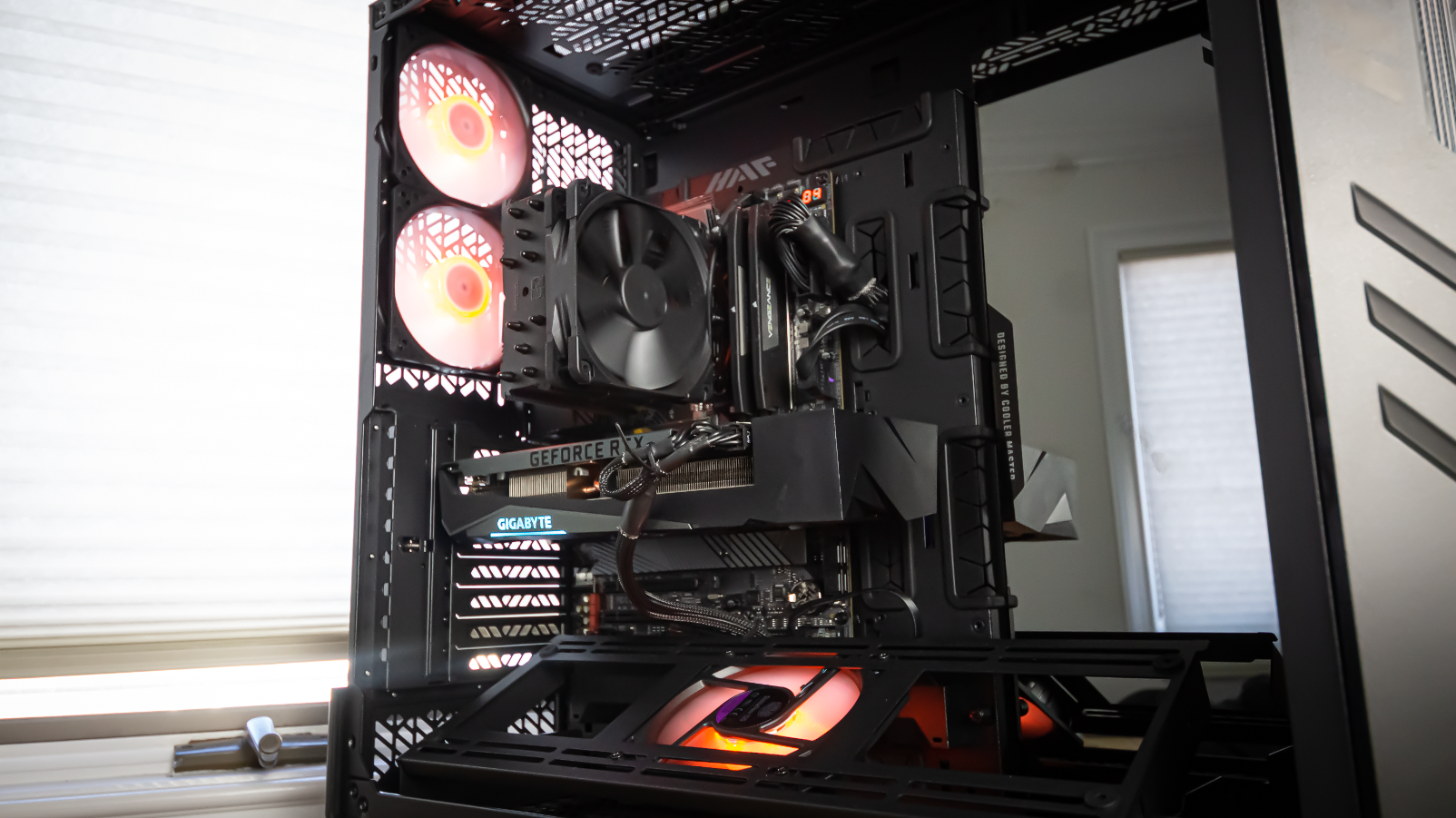

Myles Goldman is a freelance writer for Tom's Hardware US. He reviews keyboards and cases.
-
husker Reply
I don't know, I kind of like the oversized and solid Russian Industrial look that it has.MoxNix said:That case has got to be in the running for ugliest case of all time. -
sammaster I own a HAF XB Evo (the cube version of the old HAF) and I wish Coolermaster would update that case as well.Reply -
Math Geek Replysammaster said:I own a HAF XB Evo (the cube version of the old HAF) and I wish Coolermaster would update that case as well.
i love my XB Evo as well. sucker is MASSIVE but it's now on its 3rd mobo/cpu combo and still kicking. -
littlelostlinden I had to look at the calendar because I saw case for $500 that weighs 50 pounds and thought it must be April Fools, but, no, it’s only February.Reply -
Friesiansam Seems like a lot of money for an ugly case that is not as good as it should be, given that high price.Reply -
C.wolf It's nice but at $500, I'll probably just keep my old HAF X boxes forever.Reply
Now, if I could get a $300 or $400 trade in for the old box ... -
geogan I bought this case. Looks great, but is seriously pissing me off right now - lots of serious problems with it.Reply
1. The front LCD panel ONLY works if you run some Cooler-master software which runs continuously in the background as a system service - CoolerMaster MasterPlus Technology Service - but of course this garbage software continuously polls ALL hardware it seems and this causes it to poll all drives in machine, so my four 10TB storage drives can NEVER GO TO SLEEP, and instead make continuous not normal head movement clicking sounds as this software keeps moving the heads every second with special low level commands for information. When I kill the service I am back to silent drives and working machine, but now the front LCD just has a static spinning picture of incorrect CPU or whatever happened to be displayed as service was killed. Leaving this low level hardware polling going would have killed the expensive drives very quickly. Also when I put machine to sleep at night the LCD stays ON and showing same image.
2. The front USB panel does not work as advertised. At back of case is a bundle of cables from front of case, and it includes TWO 19-pin USB3.1 connectors with two cables going into each of them. My standard enthusiast X57 Hero VIII motherboard only has ONE 19-pin USB connector, so could only plug one cable in, so that means only two of the four front USB ports is actually working.
I had no choice but to search on Amazon to buy some 19-pin splitter cable and just got it today - https://www.amazon.co.uk/gp/product/B09KY2ZYVC/ref=ppx_yo_dt_b_asin_title_o00_s00?ie=UTF8&psc=1 , and tried using it to connect the two 19-pin cables - it doesn't work, Windows gives the device connected sound but then says "USB device malfunctioned" when I try and connect my iPhone XS to PC.
This works when only one original case cable is plugged into motherboard. COOLER-MASTER FOR OVER 700 EURO FOR A CASE YOU SHOULD SUPPLY A WORKING TWO TO ONE 19-PIN MOTHERBOARD CABLE SO I DON'T HAVE TO TRY AND DO IT MYSELF AND STILL NOT WORK!!
Nowhere does it say you need 2 x USB 3.0 19-pin header – for 4 x USB 3.0 Type-A ports at the front of the case
3. Tried to turn off PC using front panel power button because a GPU overclock hung display - COULD NOT DO THIS. In order to turn off you seem to have to hold power button in - then PC goes off, then IMMEDIATELY COMES ON AGAIN!!! Can't turn it off, without it coming on again!! Only way was to wait for Windows to load, and then shut down from there instead.
4. The "vertical GPU holder" is rubbish - ribbon is TOO LONG, TIGHT and STRAINED - no way to install my new Gigabyte Gaming 4080 so it is straight and level - it is now strained at an off angle (about 20 degrees) to the motherboard (becasue the too long ribbon cable is pushing it out under severe pressure while the back clamping mechanism is pulling it in the opposite way) - it looks absolutely terrible and can't be good for the two PCI-E connectors, which are being bent by the pressure from ribbon cable. Now I think I have to go back and remove the vertical holder and put GPU in normally which is a joke!
5. Horrible resonance in the included main HD case. I have four drives installed in this and when they are on and spinning (not sleeping) there is horrible noise coming from resonant vibration from drives through cage and into main frame. It is not constant either, keeps changing tone/frequencies of noise - sounds like a hairdressers shaver going all the time! Cage should have been insulated or dampened better to prevent vibration resonance amplifying through entire metal of case.
Absolutely terrible impressions of this new case. For the price of this case I should not be having these sorts of crazy problems with the case/software to run it.